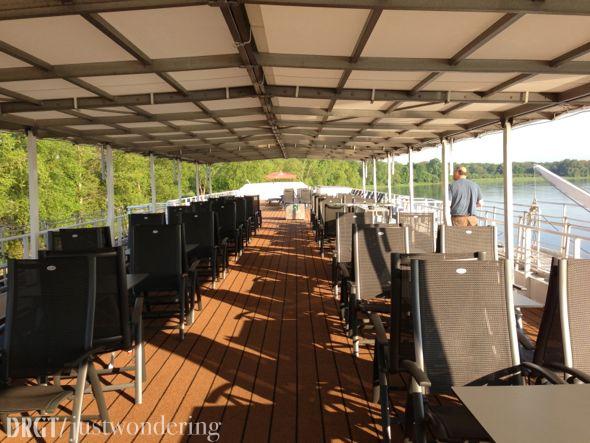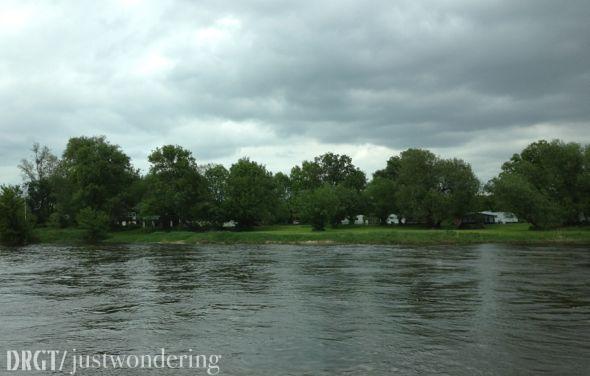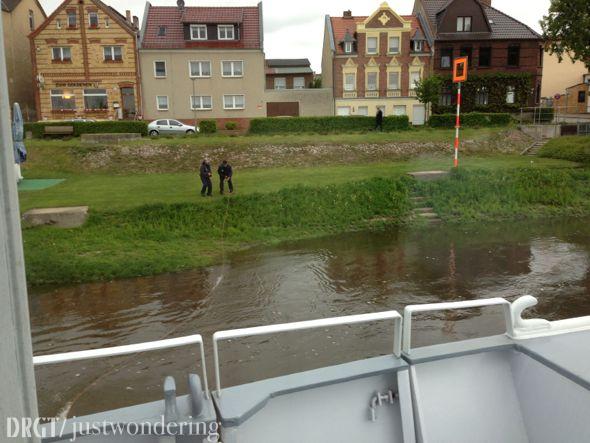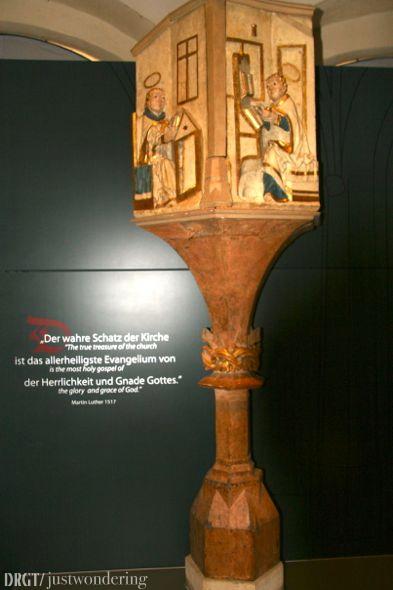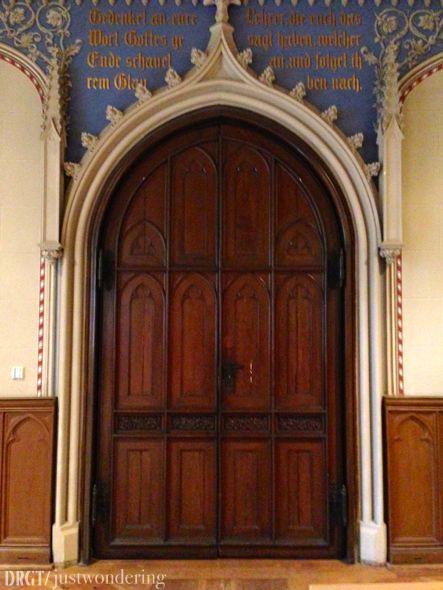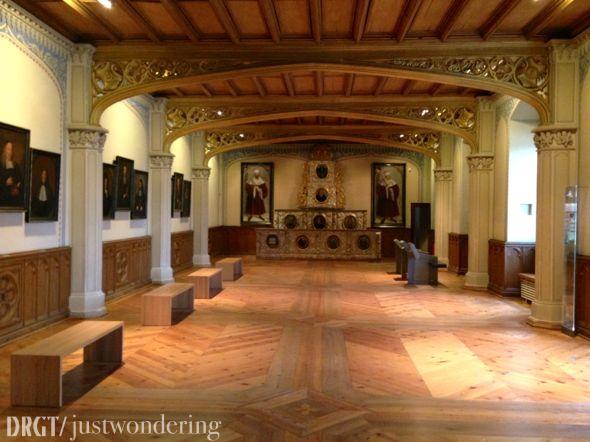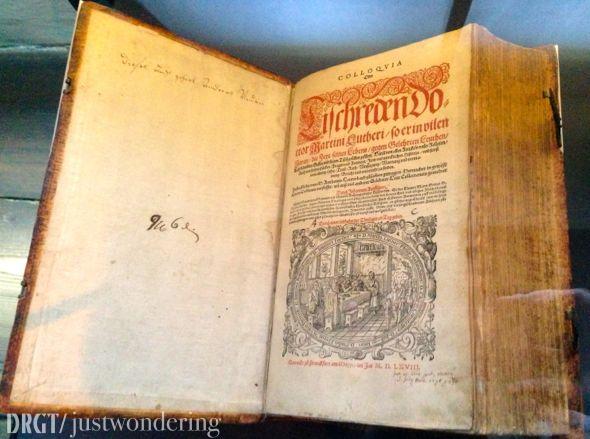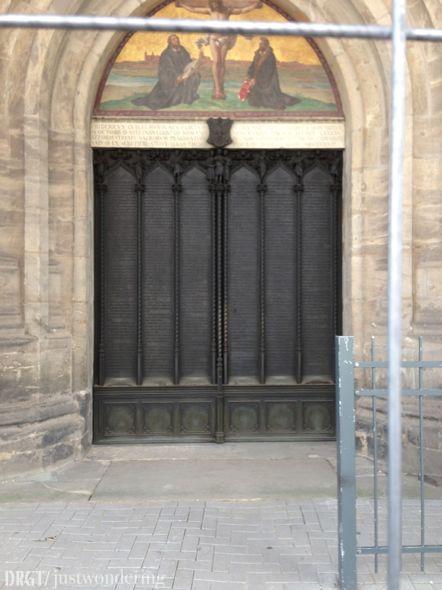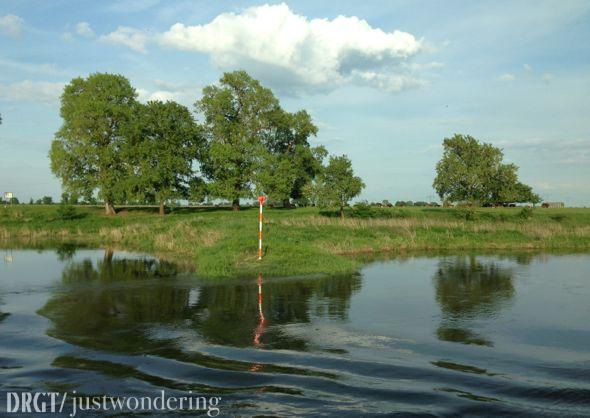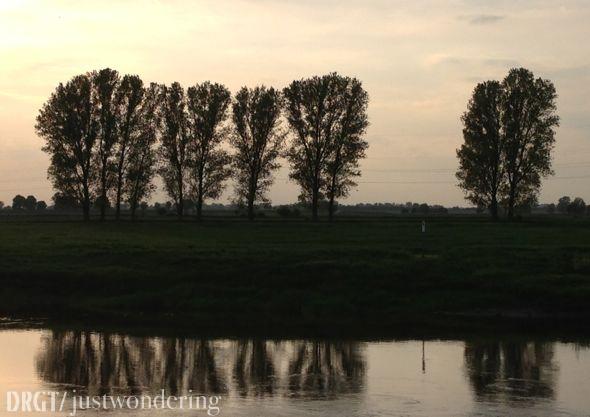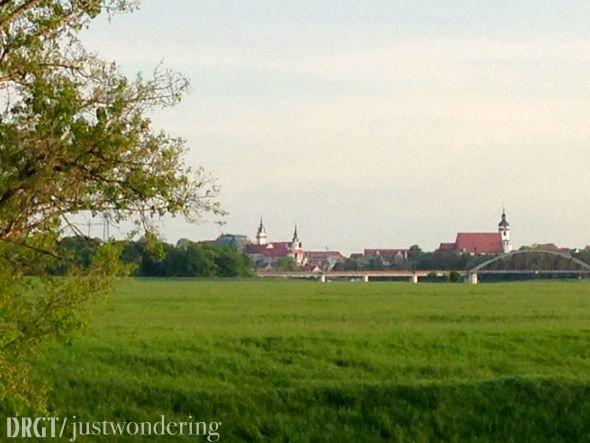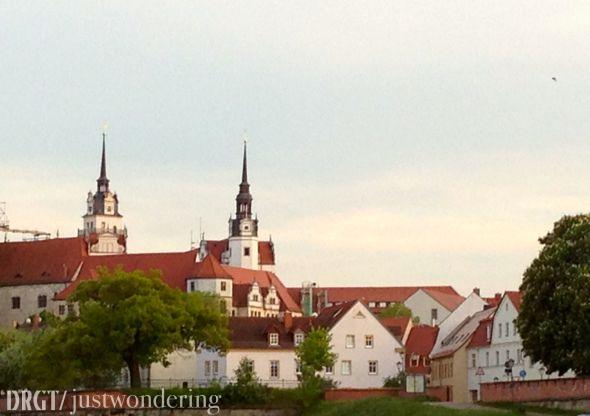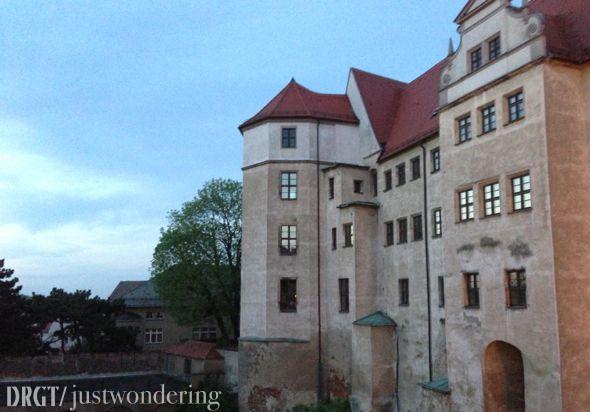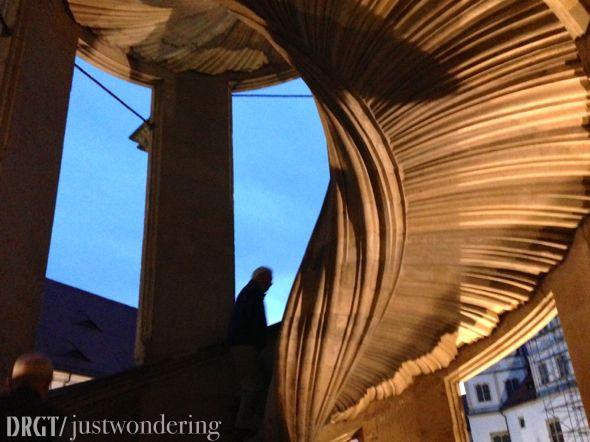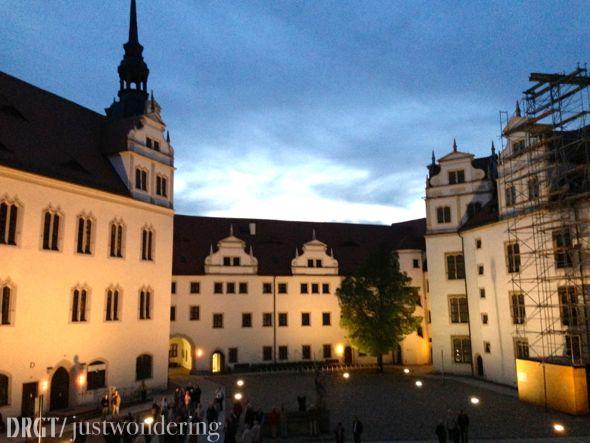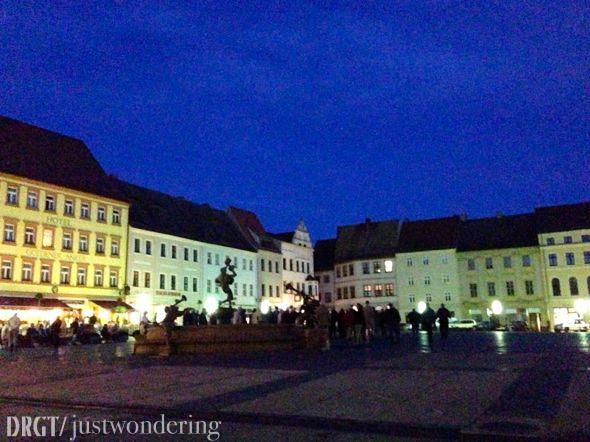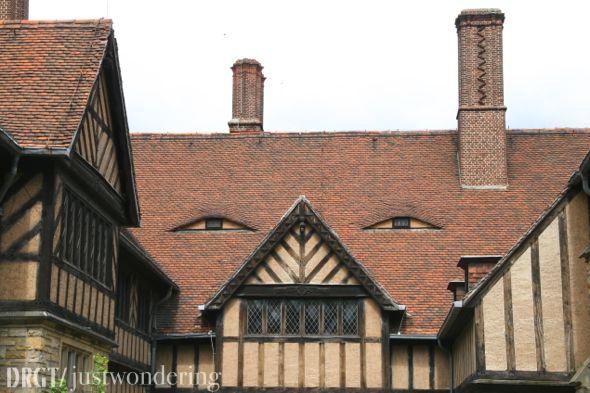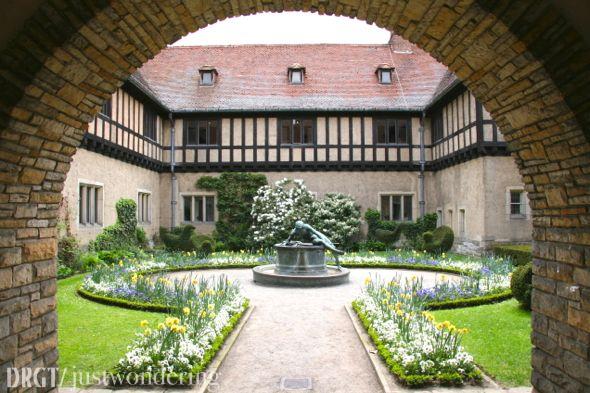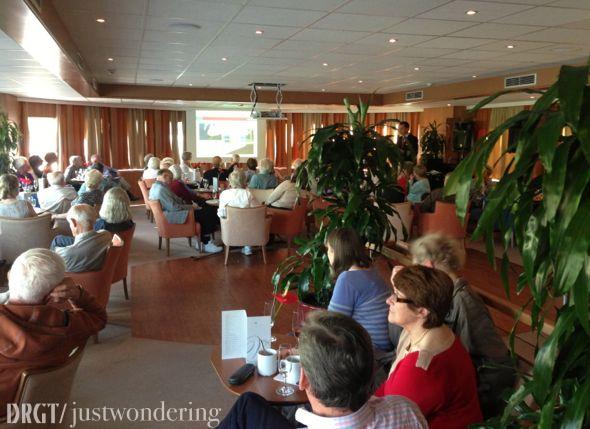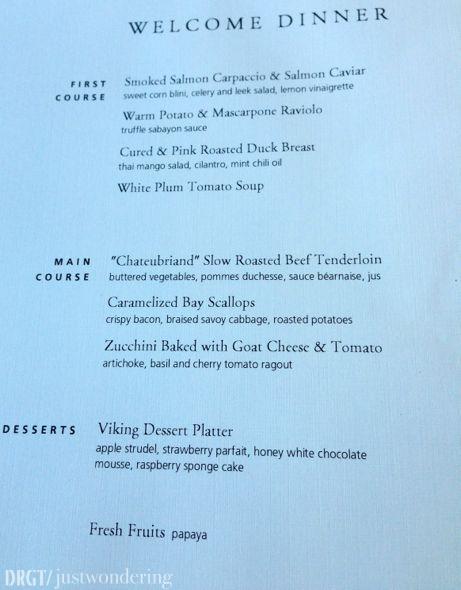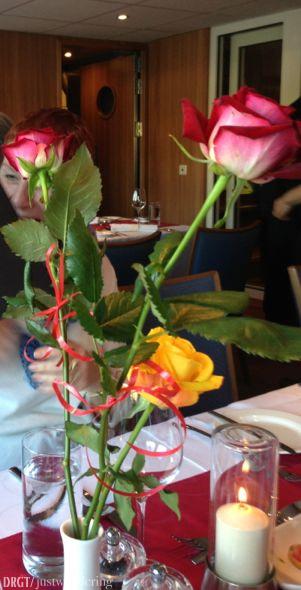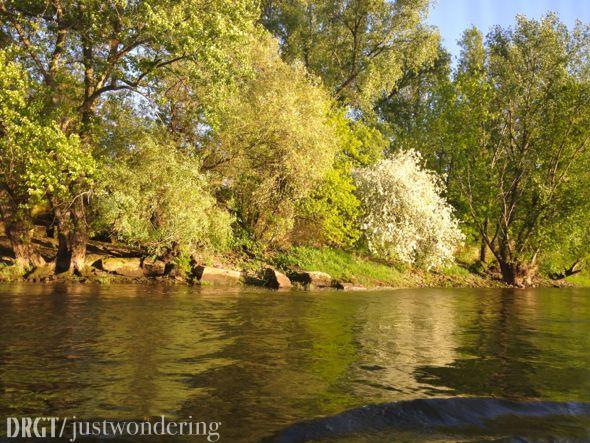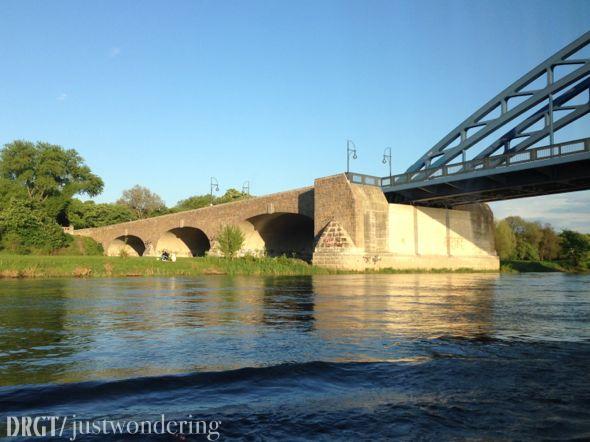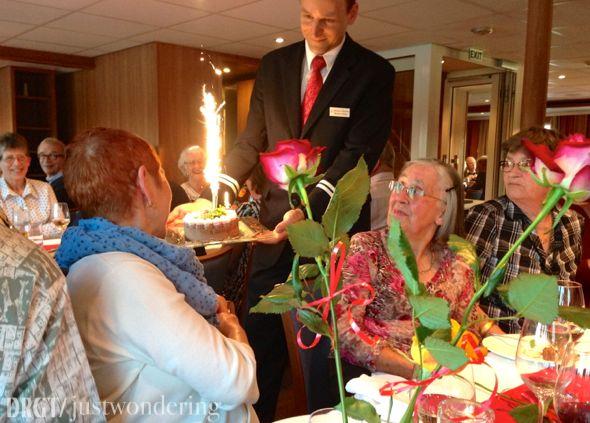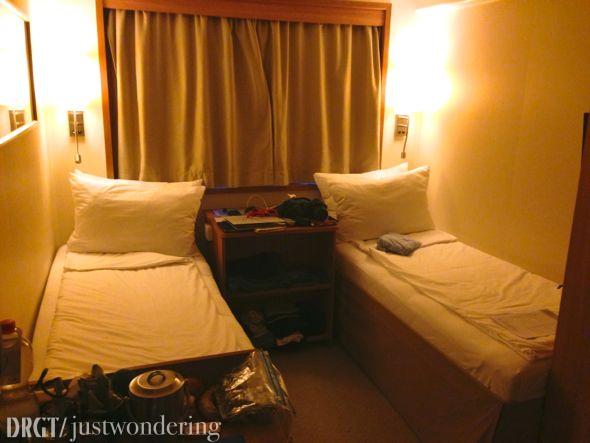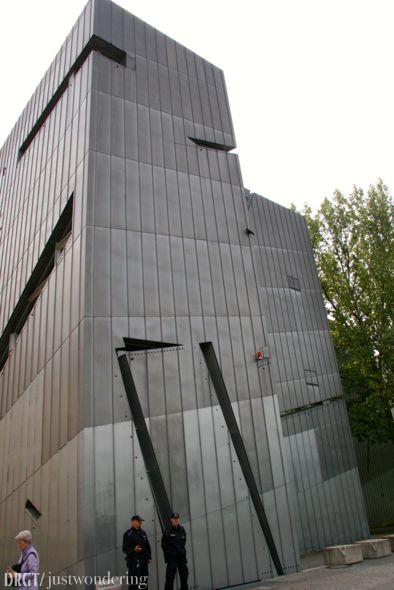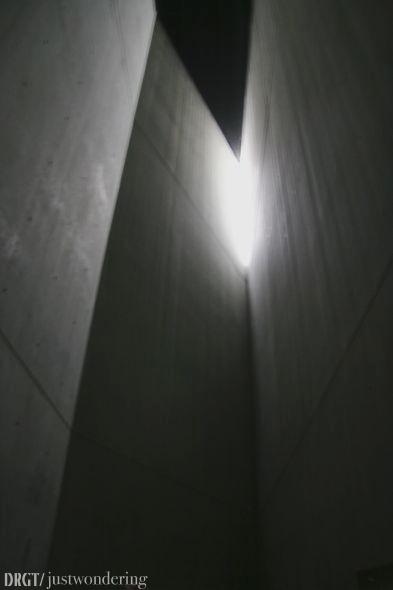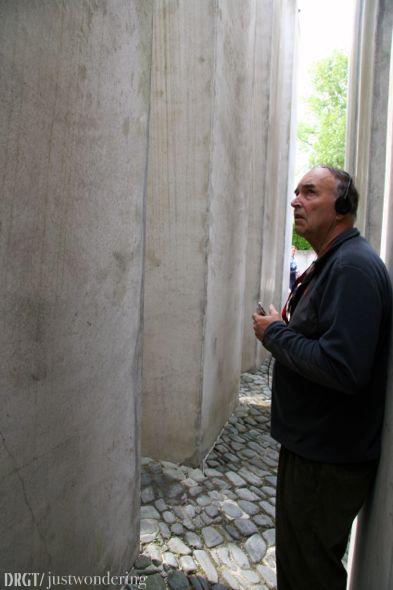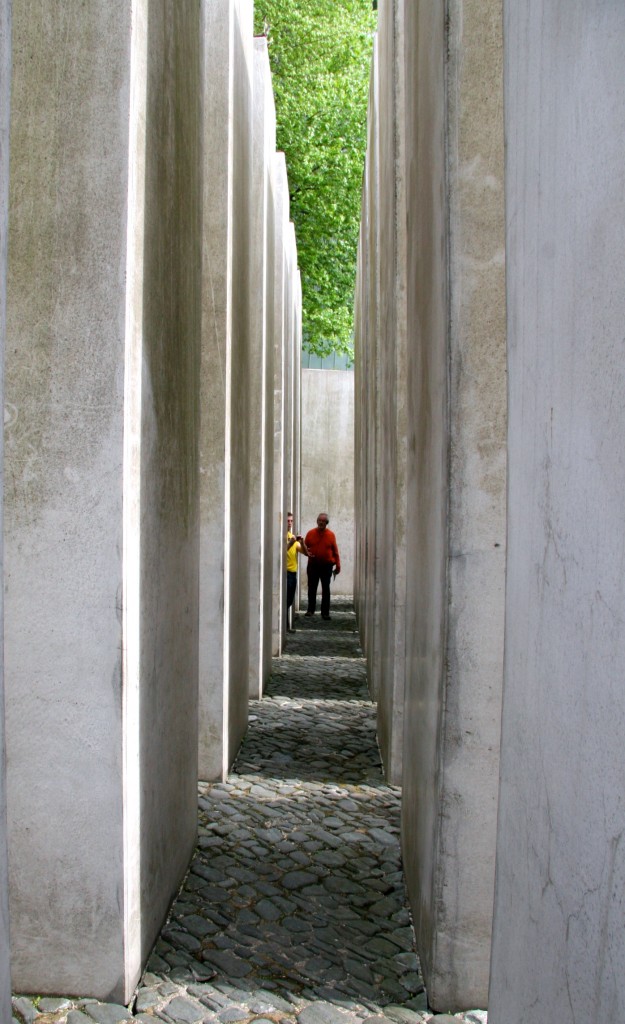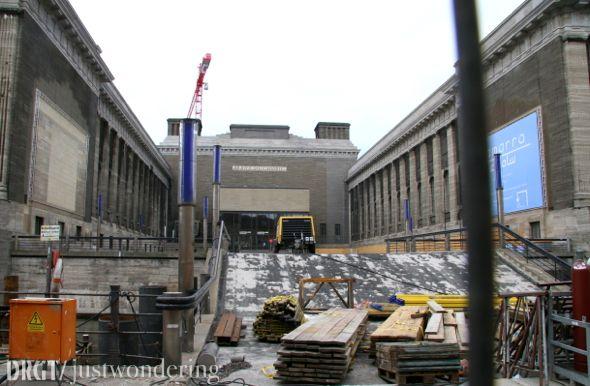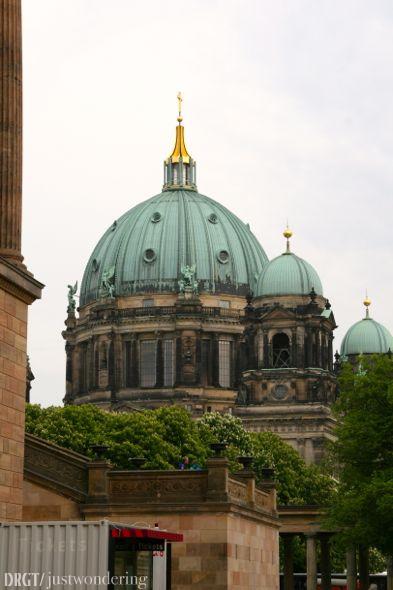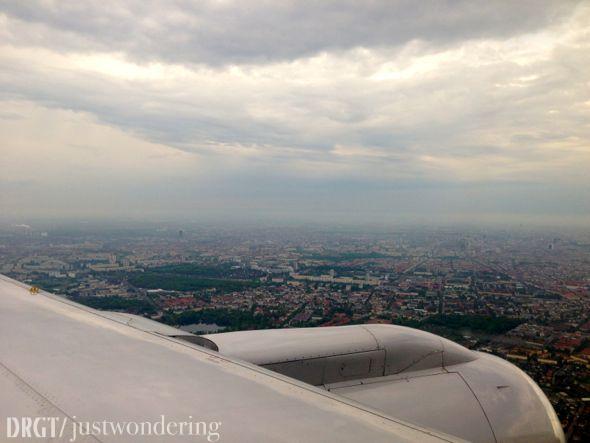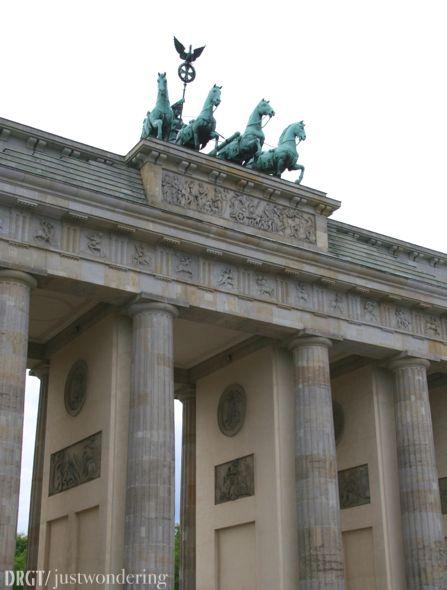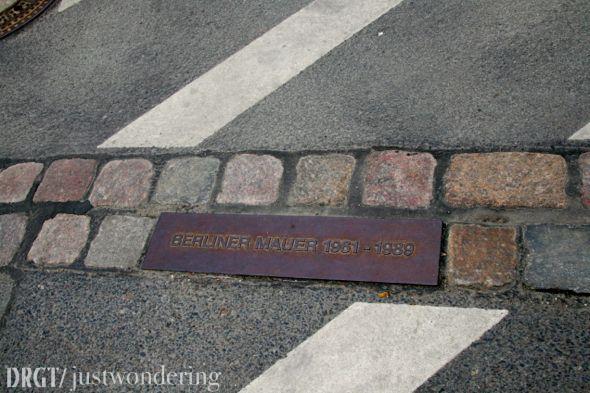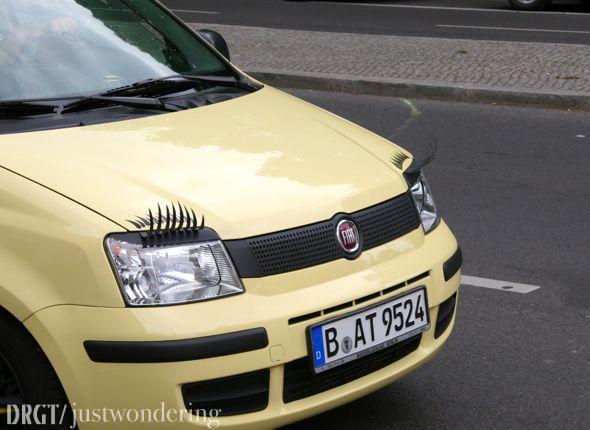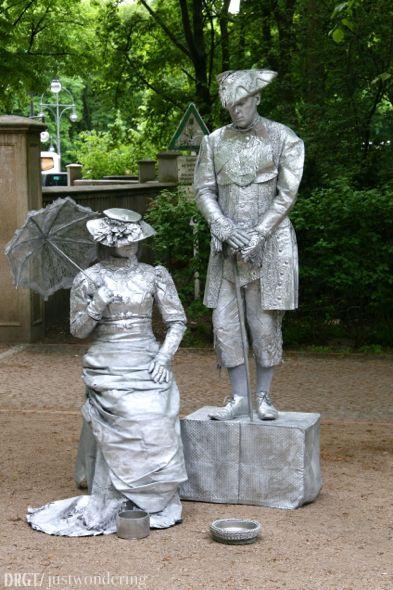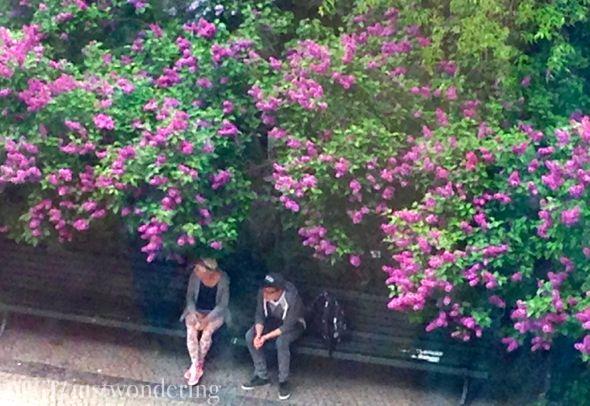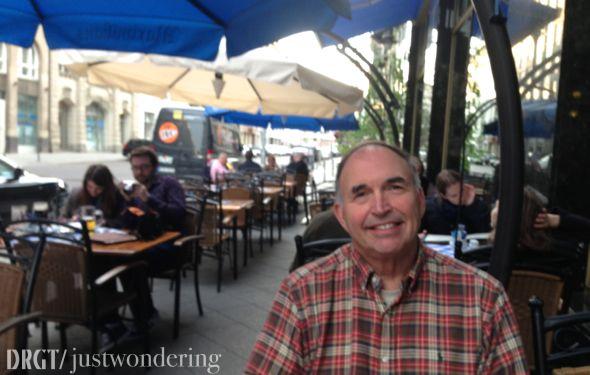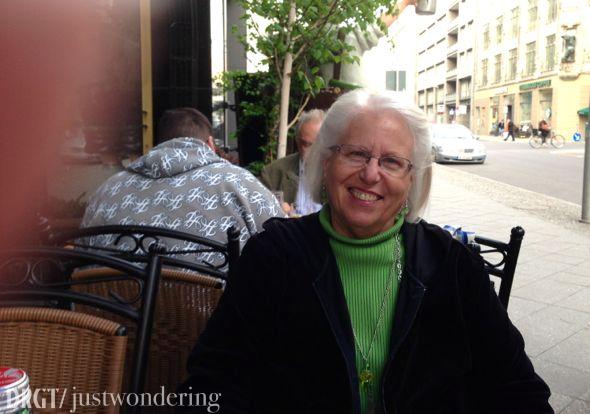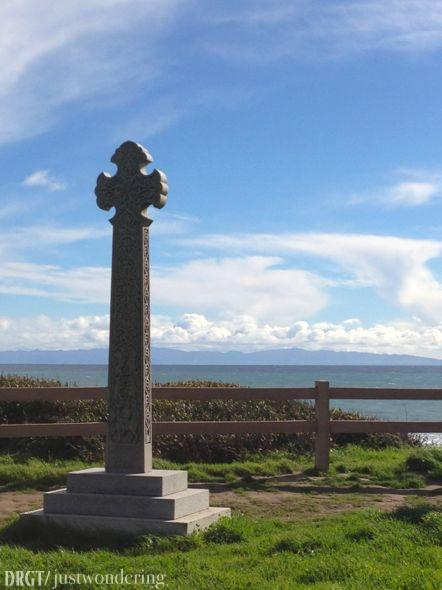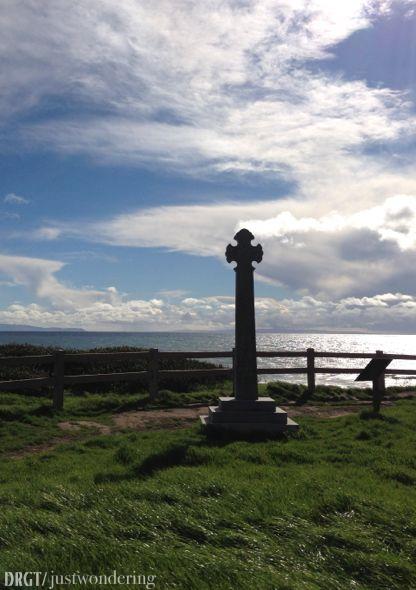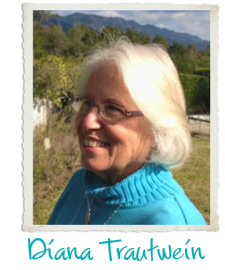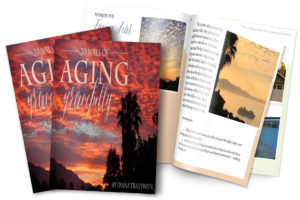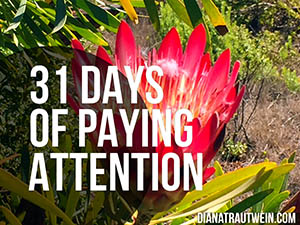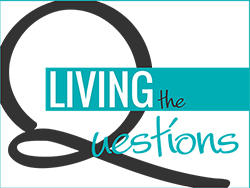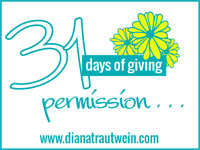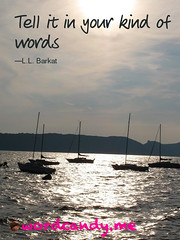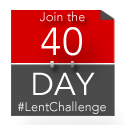Get ready to ‘set a spell,’ ’cause there are a whole lot of photos with this one.
You can find Part 1 here,
Part 2 here,
and Part 3 here.
In the wee hours of the morning, we docked in a small town called Dessau, disembarked after breakfast and headed out to one of the most beautiful places we’ve seen in Europe.
It is the largest ‘English-style’ garden on the continent,
designed in the late 18th century to be more expansive and less formal
than earlier baroque gardens.
(We took a peek at the rooftop deck on the Schumann and were favorably impressed.
However, we had to wait until later in the week for the weather to warm up a bit
before enjoying its comforts.)
Our three busses (we were almost always on Bus “C”)
took us into the town and we briefly explored the
churchyard and small restaurant which border the garden.
Turns out we were waiting to board another boat,
but a very different kind.
Called gondolas, they seat about 15 people
and are rowed around the large lake that makes up most
of the Worlitz Garden area.
Our rower was maybe 15 years old,
wiry and small but very strong.
He spoke not one word of English,
so we smiled a lot.
English country gardens feature buildings, bridges and small structures and statues
rather than formal hedges and planted borders.
And this one was just glorious.
They had recently had a special fund-raiser of some kind
and several thousand people set out blankets all over the lawns
for a magnificent concert on the water
(the musicians were in the boats) and a fireworks show.
Must have been something!
It was an idyllic hour, very quiet . . . except for the occasional raucous
sounds coming from this guy, as he tried to woo the hen to the right.
Wow, those peacocks are gorgeous to look at,
but TERRIBLE to listen to.
We stopped for a cup of hot chocolate on our way back to the bus, enjoying
this clematis vine on the restaurant wall.
Time for lunch and setting sail once again.
We arrived in Wittenberg very late in the day,
and enjoyed an excellent lecture by our program director Radim
about the importance of Martin Luther and the Protestant Reformation
to the history of Europe, and indeed, the world.
This was the part of the trip we had both looked forward to the most!
We loved the town, but struggled with our guide’s poor command of English,
the first time that has ever happened on a Viking trip.
Fortunately, almost everything she tried to tell us,
our Director had already described!
Storks are a sign of spring and good luck in many parts of Europe.
This nest was empty.
It was a cold, damp morning and we were grateful that this was a walking tour —
it warmed us right up.
The town of Wittenberg is small and charming, even though chunks of it
are undergoing renovation and construction.
This is the monastery in which Luther lived and worked
before he tacked those 95 theses onto the church door.
It is also the house where he and his wife later raised their family.
It is now a museum.
2017 will mark the 500th anniversary of this major event,
and that is why the town is undergoing renovation and construction everywhere.
Katherine (Kate or Katje) Luther, a former nun whom Luther married, loved
and partnered with for over 20 years.
Luther’s primary preaching pulpit — even though he was short,
it was so small that he had to kneel to preach from it.
The back door to Luther’s primary lecture hall, shown below.
And yes, students stood for most lectures.
An early edition of the Augsburg Confession.
A favorite Luther quote, one that I sent to The High Calling
because of how very well it fits their mission and ministry.
The sun began to shine through the clouds and we enjoyed walking down the main street of this lovely, small town. Both the preaching church at the top of the street
and the monastery church at the bottom were under renovation
and couldn’t really be seen very well.
The one at the bottom is where Luther (or a student of his)
tacked up those theses.
You can probably spot our tour guide with her ‘lollipop’ in the picture below.
The famous doors, snapped in a hurry
when the construction gate was momentarily opened.
And then we were sailing once again, as the sun began to set.
We pulled into the neighboring town of Torgau just before dinner
and took an evening walk-thru.
This is the town where Luther died and Katie had a restaurant for a while.
It was fun to see in the moonlight.
And then it was back to our moveable hotel for a delicious night’s rest on the water.

Next Installment — Meissen & Dresden. And I think there will be an extra cruise post, bringing the total to 8 (I hope!).
